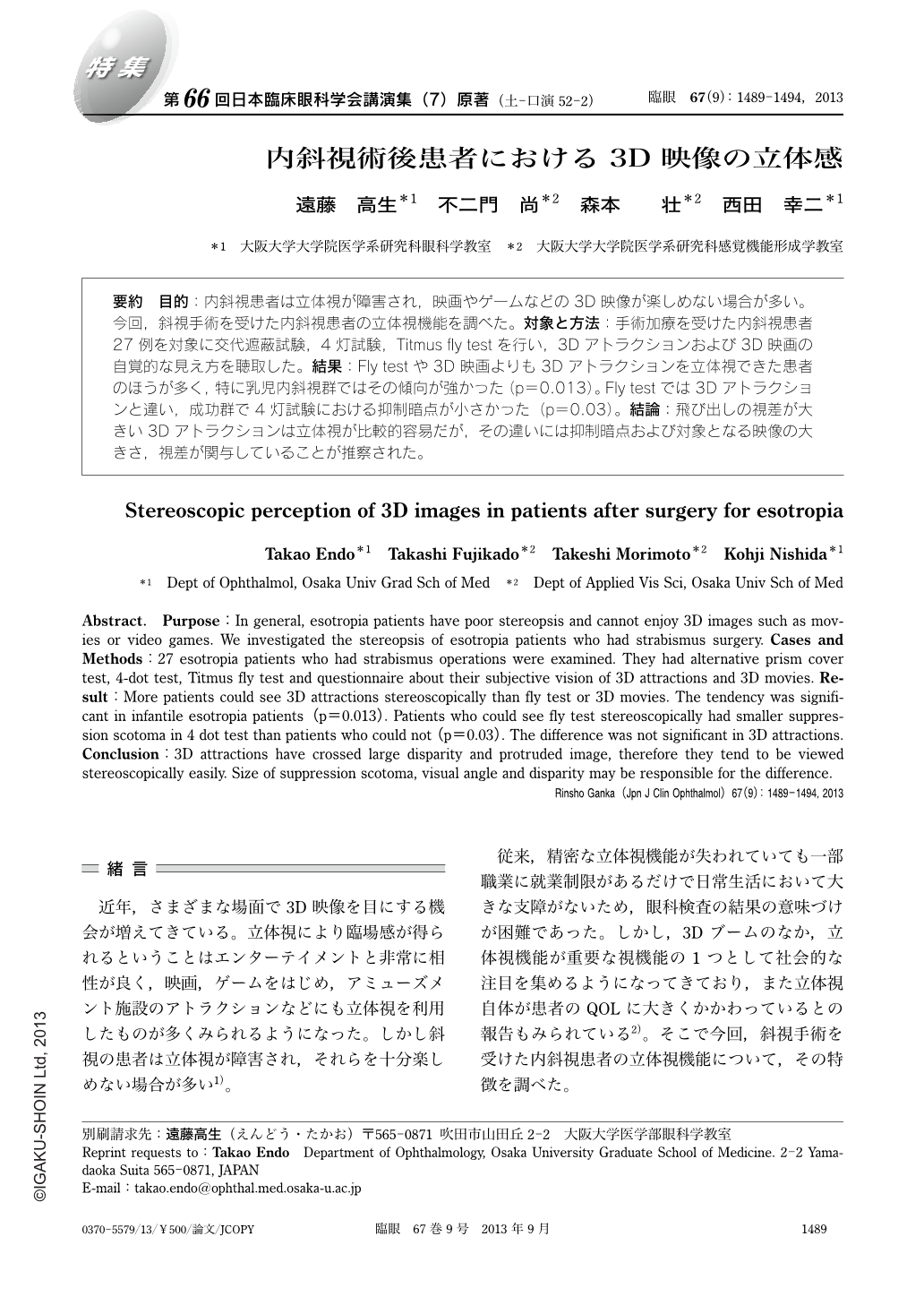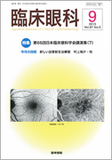Japanese
English
- 有料閲覧
- Abstract 文献概要
- 1ページ目 Look Inside
- 参考文献 Reference
要約 目的:内斜視患者は立体視が障害され,映画やゲームなどの3D映像が楽しめない場合が多い。今回,斜視手術を受けた内斜視患者の立体視機能を調べた。対象と方法:手術加療を受けた内斜視患者27例を対象に交代遮蔽試験,4灯試験,Titmus fly testを行い,3Dアトラクションおよび3D映画の自覚的な見え方を聴取した。結果:Fly testや3D映画よりも3Dアトラクションを立体視できた患者のほうが多く,特に乳児内斜視群ではその傾向が強かった(p=0.013)。Fly testでは3Dアトラクションと違い,成功群で4灯試験における抑制暗点が小さかった(p=0.03)。結論:飛び出しの視差が大きい3Dアトラクションは立体視が比較的容易だが,その違いには抑制暗点および対象となる映像の大きさ,視差が関与していることが推察された。
Abstract. Purpose:In general, esotropia patients have poor stereopsis and cannot enjoy 3D images such as movies or video games. We investigated the stereopsis of esotropia patients who had strabismus surgery. Cases and Methods:27 esotropia patients who had strabismus operations were examined. They had alternative prism cover test, 4-dot test, Titmus fly test and questionnaire about their subjective vision of 3D attractions and 3D movies. Result:More patients could see 3D attractions stereoscopically than fly test or 3D movies. The tendency was significant in infantile esotropia patients(p=0.013). Patients who could see fly test stereoscopically had smaller suppression scotoma in 4 dot test than patients who could not(p=0.03). The difference was not significant in 3D attractions. Conclusion:3D attractions have crossed large disparity and protruded image, therefore they tend to be viewed stereoscopically easily. Size of suppression scotoma, visual angle and disparity may be responsible for the difference.

Copyright © 2013, Igaku-Shoin Ltd. All rights reserved.


